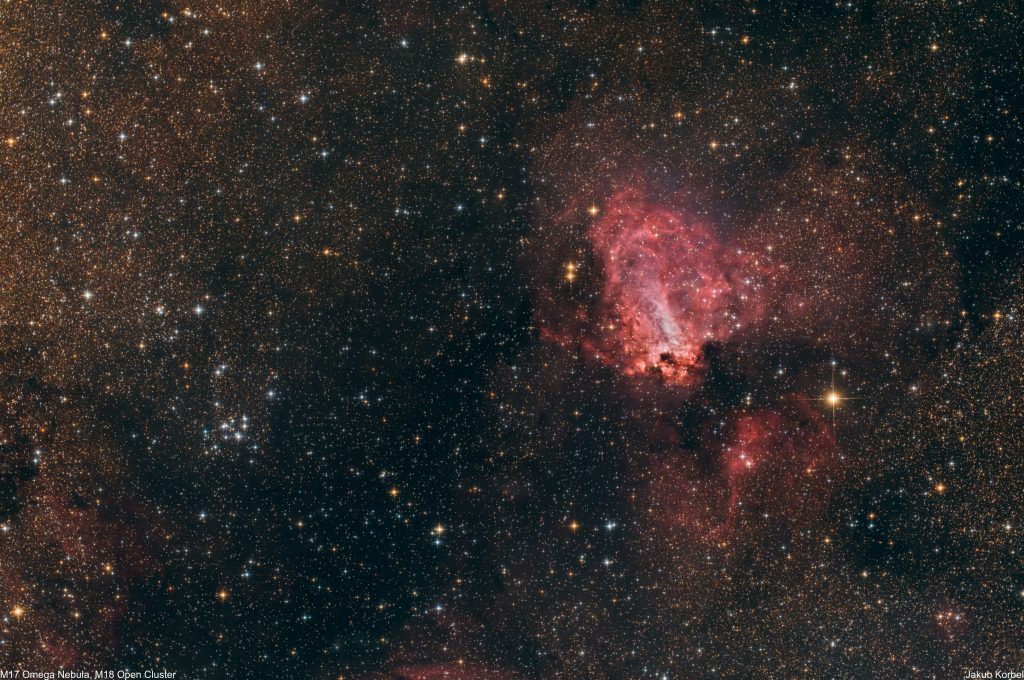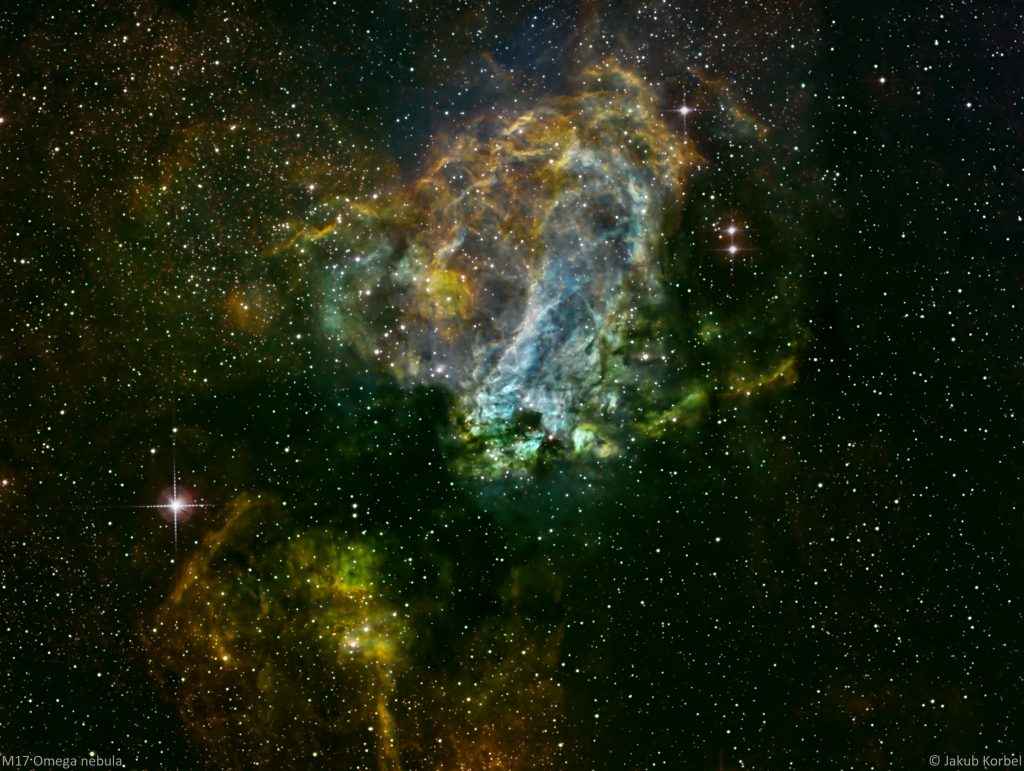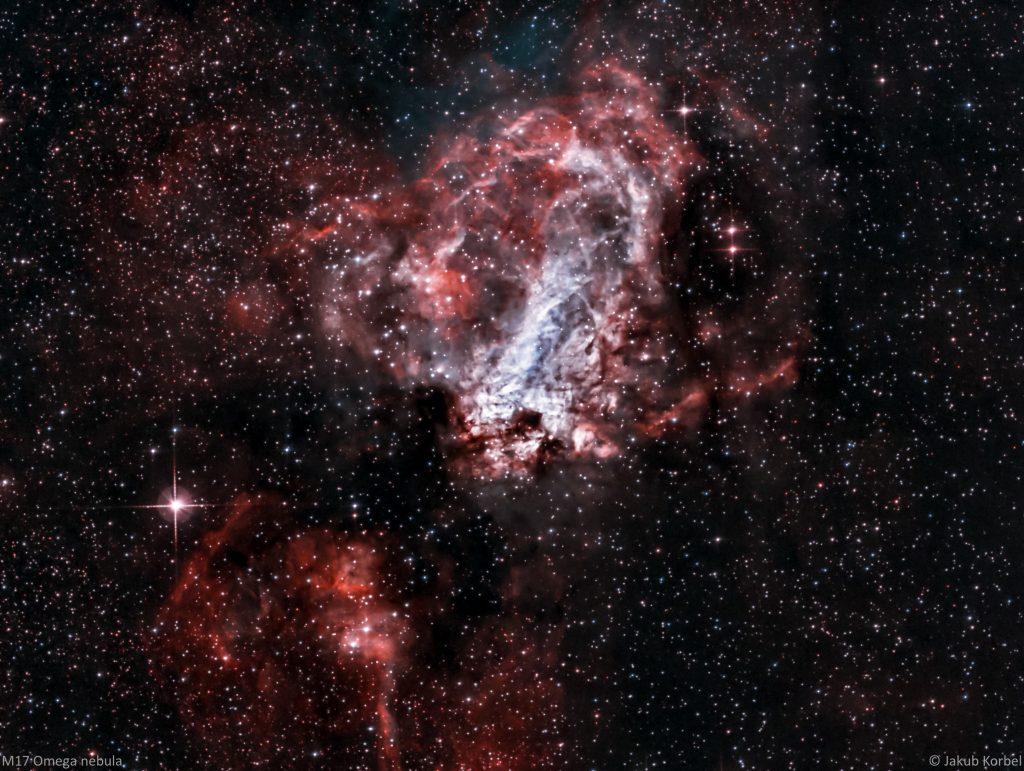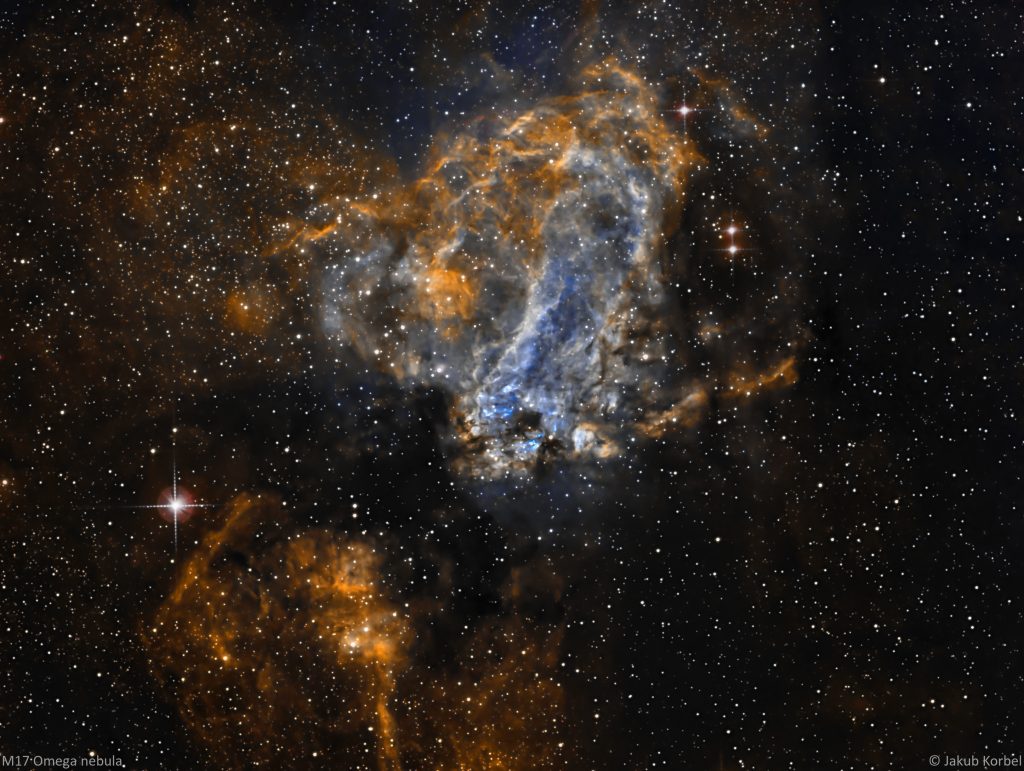Due to moderate focal length of my telescope (660 mm) I managed to capture two Messier’s object in one shot. Specifically it was Omega nebula M17 (on the right) and open cluster M18 (on the left). I already captured Omega nebula some time ago, but due to its very low declination, the picture was not that nice. I was really happy that I got the opportunity on island Milos to capture it again. The cluster M18 is approximately 4200 light-years away from Earth and it has diameter 17 light-years.
Technical details:
| Telescope | Newton 150/600 mm |
| Aperture | 150 mm |
| Focal length | 660 mm |
| Mount | iOptron CEM25P |
| Autoguiding | QHYCCD miniGuideScope 130 mm f/4.3, ZWO 174 MM |
| Camera | ZWO 071 Pro @-10C |
| Corrector | Explore Scientific HR coma corrector |
| Filters | Astronomik L-1 - UV IR Block Filter |
| Exposure | 37x180s, Gain 134, bin 1x1, |
| Date | 2018-09-06 |




